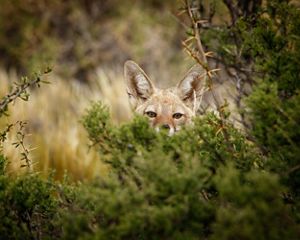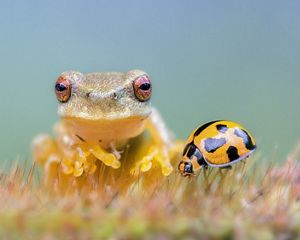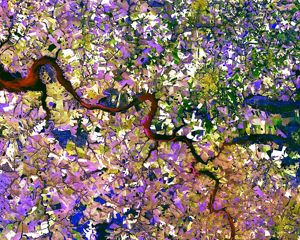Connection Counts
A conversation on why linking places and species matters
By Lynn Scarlett and Jeffrey Parrish
We are now living the long-projected impacts of climate change. This year, Arctic temperatures rose above 100°F degrees. Antarctica’s glaciers melted ever faster, and sea levels rose to historic levels. Fires and floods, storms and tidal surges are daily harbingers in the headlines, and our human footprint is ever-expanding.
As the climate changes and the world transforms, nature will evolve; but will its diversity, density and distribution resemble anything like what we have known? If the species and ecosystems we know today are to persist, we must ensure that protected habitats are not only large enough and representative, but connected enough so that wildlife, wildlands and waters can move, migrate and adapt. Connectivity is also crucial so that species that have moved for millennia with the seasons, can continue to pulse across the land and sea.
The International Union for Conservation of Nature (IUCN) has introduced new guidelines for how to achieve this ecological connectivity that is critical for the future of biodiversity. Jessie Levine, of TNC, coauthored this work, and says that having a consistent framework for how to embrace and create ecological connectivity will elevate the conversation, especially going into negotiations around the global Convention on Biological Diversity, which will chart the course for conservation for the next decade and beyond. As we call for 30x30 protection of land and ocean, connectivity is a thread that runs throughout.
Dr. Jeffrey Parrish, TNC’s Global Managing Director for the organization’s Protect Oceans, Lands and Waters strategy, recently sat down for a socially distanced chat with Lynn Scarlett, TNC’s Chief External Affairs Officer, about why ecological connectivity is so critical for the future of the natural world.
Migrating species, migrating habitats
JP: Lynn, as you know, I’ve always been fascinated with animal movements, with migrations, long before we realized how important it was for even non-migratory species to be able to move under climate change. And I know you’ll appreciate this as a birder—my most vivid memory is from my PhD research on songbirds on Block Island, Rhode Island. My first research season I netted a Blackpoll Warbler during its journey south from the boreal forests of Canada. I held this little bird in my hand, and marveled that a tiny creature that weighs the same as a few coins was about to take off that night for a nonstop journey to the forests of Brazil. That pulse of life moving across the planet—whether it’s a songbird or a pronghorn antelope, or a wildebeest—and the pathways those species need, have been front of my mind ever since.
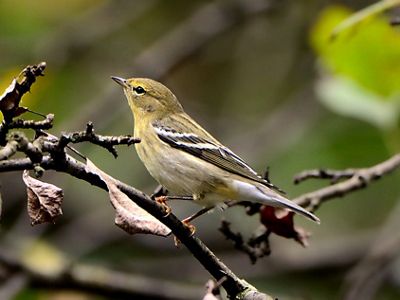
LS: Absolutely, Jeff, and I’ll tell you a slightly different sort of story about conservation and connectivity and scale. A while back, I stood with a friend of mine who was part of the team that helped sustain the California condor, watching the birds that had been reintroduced into their natural habitat. Thirty years ago, this project was controversial. The population was down to the last 20 birds, but some people saw captive breeding as too much intervention or destined to fail. Yet there we stood, sky pinkening behind the tree snags, and in soared 10 … 11 … 12 California condors. Now, we’re talking about condors coming to protected lands all across their historic range, up to the Canadian border and beyond.
JP: Species need the freedom to roam to survive this warmer, more crowded world. And for that to happen we need networks of habitat cores and corridors, not just for top-of-mind species like songbirds, but for migratory fish, insects, mammals, and more – as well as for the ecosystems that are shifting northward (southward in the southern hemisphere) or higher and are changing as the climate warms.
LS: You pull on one string and you find that it’s connected to everything else. The acute problem with climate change that we now face makes these interconnections ever more significant.
JP: The world is changing and “protecting nature” in the face of habitat fragmentation and climate change is far more complex than just having national parks. The conservation world needs to adapt, too. That’s why we at TNC define protection more broadly—to include nature’s security on communal lands, indigenous lands, private lands and across working landscapes. And protection to be effective, must be resilient and connected.
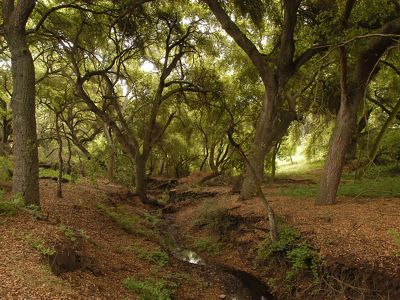
New ways to scale work for protection and connection
LS: Oftentimes, you cannot work at the scale we need without collaboration across areas of private and public ownership. Your question becomes, how do you look at that whole? Conservationists have tended to work in silos, bounded by geography or sector. Many institutional underpinnings are woefully inadequate to the challenges we face. We need to work toward institutional connectivity in addition to habitat connectivity.
JP: That’s so true, Lynn! These new guidelines for connectivity emphasize the different kinds of partnerships that bring all the conservation tools to bear on protecting habitat at scale and achieving protection that is effective and resilient in the face of change and durable over time. Our partnerships with Indigenous communities, supporting their voices and choices to manage their own lands, is a good example of the partnerships that are needed. Similarly, traditional protection efforts must integrate with climate and agricultural or fisheries strategies such as regenerative agriculture and sustainable grazing to ensure connectivity.
LS: Our recent work in Mongolia is a great example. Our partners didn’t just create a park; they created a whole, representative network of different kinds of protected areas that are supported by governance, and work in accord with herding communities and in guiding mining businesses so that protected areas and grazing practices create a network of cores and corridors for the country’s biodiversity.
JP: Indeed, this is the first year of the last decade we have to protect and connect what’s left. Changing policies and practices so those condors and that little blackpoll warbler have the freedom to roam is your and my laser focus for TNC for the next 10 years.
Lynn Scarlett is the Chief External Affairs Officer for The Nature Conservancy.
Jeffrey Parrish is the Managing Director for Protect Oceans, Lands, and Water at The Nature Conservancy.
Our global insights, straight to your inbox
Get our latest research, insights and solutions to today’s sustainability challenges.
Sign UpGlobal Insights
Check out our latest thinking and real-world solutions to some of the most complex challenges facing people and the planet today.

